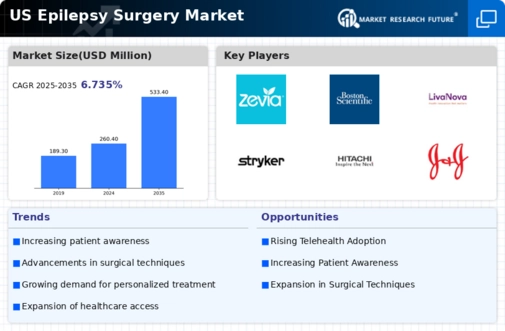The US epilepsy surgery industry is characterized by a combination of established and developing enterprises that work together to advance surgical treatments for epilepsy therapy. Competitive insights show that organizations are increasingly concentrating on innovation, patient-centered treatment, and technical developments to improve surgical outcomes.Factors influencing market dynamics include the rising prevalence of epilepsy, increased awareness of surgical choices among patients and healthcare providers, and ongoing research efforts to improve surgical procedures.
As the demand for effective epilepsy management solutions grows, top companies are forming strategic alliances, collaborations, and mergers to boost their market positions and broaden their products.ZEVIA holds a significant presence in the US epilepsy surgery market, leveraging its expertise in providing targeted solutions for epilepsy management. The company's strength lies in its commitment to innovative approaches that enhance surgical methods and improve overall patient outcomes.ZEVIA has established a robust portfolio of products that cater specifically to the needs of epilepsy patients, positioning itself as a trusted player within the market.
Its continuous efforts in research and development enable the company to stay ahead of the competition by introducing cutting-edge technologies and approaches to epilepsy surgery, thereby solidifying its standing in this specialized field.Boston Scientific is another prominent player in the US epilepsy surgery market, known for its comprehensive range of neuromodulation devices and surgical solutions tailored to treat epilepsy. The company has developed key products that facilitate both surgical procedures and post-operative care, thereby addressing multiple facets of epilepsy management.
Boston Scientific’s market presence is bolstered by its strategic initiatives, including various mergers and acquisitions that expand its technological capabilities and enhance its product offerings. The company's strengths lie in its commitment to innovation and collaboration with healthcare professionals to ensure that its devices meet the highest standards of efficacy and safety. With a strong focus on advancing epilepsy treatment, Boston Scientific is well-positioned to influence the market through ongoing research efforts and a patient-centric approach to surgical interventions.





















